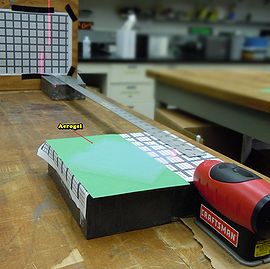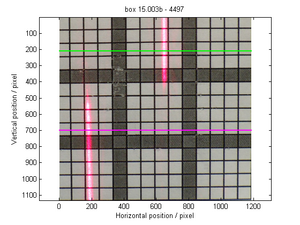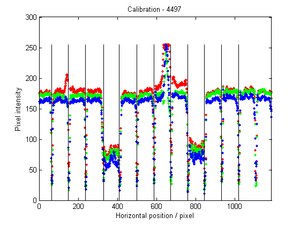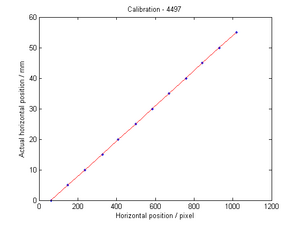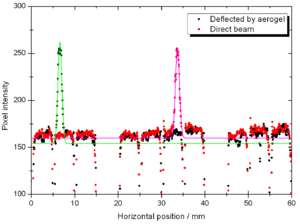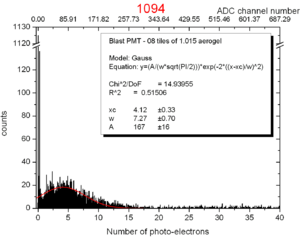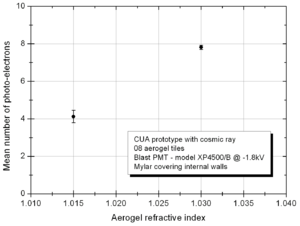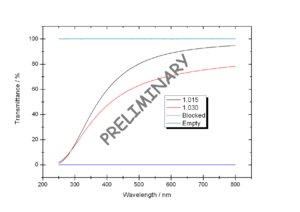Difference between revisions of "MainPage:Nuclear:KaonDetector:AerogelCharacteristics"
| Line 69: | Line 69: | ||
To see a similar test done for the analysis of the different PMTs options for the Kaon Aerogel Detector, click [[MainPage:Nuclear:KaonDetector:PMTCharacteristics|here]]. | To see a similar test done for the analysis of the different PMTs options for the Kaon Aerogel Detector, click [[MainPage:Nuclear:KaonDetector:PMTCharacteristics|here]]. | ||
| + | |||
| + | == Optical properties - Transmittance == | ||
| + | |||
| + | {| border="0" style="text-align:center;" width="100%" | ||
| + | |+'''Summary of the aerogel evaluation - Aerogel Prototype''' | ||
| + | |- | ||
| + | | valign="top"| | ||
| + | [[File:aerogel_transmittance.png|thumb|center|300px|Preliminary results of the aerogel transmittance properties.]] | ||
| + | |} | ||
Revision as of 16:49, 11 December 2012
| This page is under construction. |
| ⇐ Back to the Kaon Detector page |
Refractive index measurement
In order to evaluate the quality of the aerogel tiles we bought for the Kaon Aerogel Detector, an experimental setup was prepared. Four tiles with refractive index 1.015 were randomly selected and analyzed.
This method consists of a laser sheet, part of it passing through the analyzed aerogel tile and the other part passing out of it. The beam that goes inside the tile get refracted. A reference paper is placed after the tile to mark both the direct and refracted beams. The deviation of the laser is them possible to be measured (using image analysis) for the calculation of the refractive index that causes such deflection.
Kaon Aerogel Detector prototype - Aerogel light yield comparison
In order to compare the different aerogel (refractive index) we will use in the Kaon Aerogel Detector, a set of cosmic rays data was acquired with the CUA's prototype. Details of the prototype can be found in the Prototype page.
To evaluate the relative light yield of the aerogel tiles with refractive indexes 1.030 and 1.015, the setup was run with the same configuration twice (just exchanging the aerogel).
The setup configuration was kept as follows:
- Cosmic ray configuration (two triggering PMTs with scintillator on the top and bottom of the prototype)
- 08 aerogel tiles
- Mylar covering the internal walls of the prototype
- High voltage of -1.80 kV on the PMT
- Blast PMT for all runs (model XP4500/B s/n 09650, with calibration from run 481)
To see a similar test done for the analysis of the different PMTs options for the Kaon Aerogel Detector, click here.

